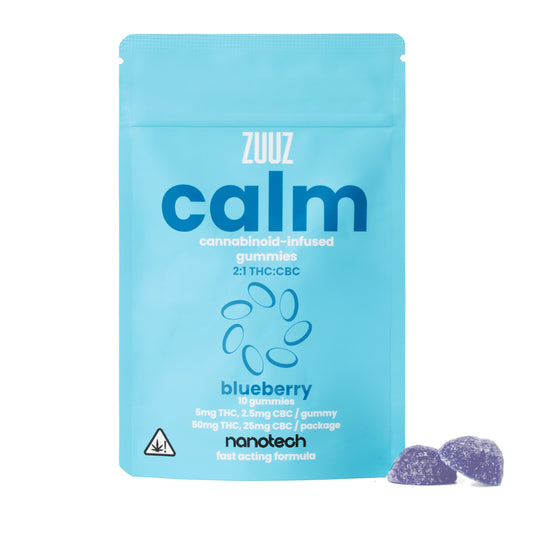What are THC edibles?
Edibles are one of the most popular ways people consume cannabis today. Among them, THC gummies stand out for their convenience, consistent dosing, and discreet use. But while they may look like ordinary candy, THC edibles work very differently inside the body compared to smoking or vaping.
This guide explores what THC edibles are, how they’re made, how they work in the body, the benefits and potential drawbacks, and what first-time consumers should know before trying them.
What Is THC?
Tetrahydrocannabinol (THC) is the primary psychoactive compound in cannabis. It interacts with the body’s endocannabinoid system (ECS) — a network of receptors that helps regulate mood, sleep, appetite, and stress response.
When THC binds to CB1 receptors in the brain, it can produce effects such as:
-
Euphoria
-
Relaxation
-
Heightened sensory perception
-
Increased appetite
Research has also examined THC’s potential for pain relief, nausea reduction, and sleep support (NIH Review).
What Are THC Edibles?
THC edibles are food or drink products infused with THC extract. Gummies are one of the most common forms because they allow precise, repeatable dosing and easy storage. Other edible formats include baked goods, chocolates, capsules, and beverages.
Key features of edibles include:
-
Pre-measured doses (e.g., 5–10 mg THC per gummy)
-
Discreet consumption (no smoke or vapor)
-
Longer-lasting effects compared to inhaled cannabis
How THC Edibles Work in the Body
Absorption and Digestion
When you eat a THC gummy, the compound is absorbed in the digestive tract and then processed by the liver. During this process, THC is metabolized into 11-hydroxy-THC — a compound known to be more potent and longer-lasting than THC alone (PubMed).
Timing of Effects
-
Onset: 30 minutes to 2 hours
-
Peak effects: 2–4 hours after ingestion
-
Duration: 4–8 hours (sometimes longer depending on dose and metabolism)
This delayed onset is why first-time users sometimes overconsume — they don’t feel effects quickly and mistakenly take more.
Benefits of THC Edibles
Longer-Lasting Relief
Unlike inhalation methods, edibles provide a sustained effect that may help with sleep, pain management, or ongoing stress relief.
Discreet and Convenient
Gummies and other edibles don’t produce odor or require special equipment. They can be consumed almost anywhere discreetly.
Precise Dosing
Most gummies are made with standardized doses, making it easier to track and adjust intake compared to smoking.
Accessible for Non-Smokers
For people who don’t want to smoke or vape, edibles offer a comfortable entry point.
Risks and Drawbacks
Delayed Onset
Because it takes time for edibles to work, overconsumption is a common risk.
Stronger Effects
11-hydroxy-THC can produce a more intense and sometimes overwhelming experience, especially for inexperienced consumers.
Variability
Effects differ by individual due to metabolism, tolerance, and diet.
Next-Day Effects
At higher doses, some people experience residual grogginess.
How Potency and Formulation Matter
Not all THC gummies are created equal. Potency, absorption method, and formulation all affect how edibles feel.
-
Traditional oil-based gummies → slower absorption, more variability.
-
Nano THC edibles (using nano-emulsification technology) → faster onset and more predictable effects (NIH Review).
How to Use THC Edibles Safely
Start Low, Go Slow
Begin with 2.5–5 mg THC and wait at least 2 hours before taking more.
Consider Context
-
Take edibles in a calm environment.
-
Avoid mixing with alcohol.
-
Eat a small meal first to help stabilize absorption.
Be Patient
Because effects last longer, plan around them — don’t take before work or important activities.
THC Edibles vs Other Methods
|
Method |
Onset |
Duration |
Intensity |
Notes |
|---|---|---|---|---|
|
Smoking/Vaping |
Minutes |
1–3 hours |
Rapid, adjustable |
Inhalation risks |
|
Traditional Edibles |
30–120 min |
4–8 hours |
Stronger, variable |
Risk of overuse |
|
Nano THC Gummies |
~20–40 min |
3–6 hours |
More controlled |
Faster absorption |
Common Questions About THC Edibles
Do THC Edibles Expire?
Yes, gummies usually last 6–12 months. THC potency can degrade if exposed to heat, air, or light (NIH Study).
How Long Do Edibles Last?
Most edibles last 2-4 hours, with some effects lingering up to 12 hours depending on dose and individual metabolism.
Are Edibles Legal?
Federally, hemp-derived edibles must contain ≤0.3% Delta-9 THC by dry weight. State laws vary, so always check local regulations.
Do Edibles Help with Sleep?
Research suggests THC may promote sleep, especially in combination with cannabinoids like CBN (PMC Study).
Conclusion
THC edibles, particularly gummies, are a widely used and effective way to experience cannabis. They offer longer-lasting, discreet, and precisely dosed effects, though they also require patience due to delayed onset and can be intense for first-time users.
For beginners, the safest approach is to start with a low dose, wait, and adjust gradually. With more research and new formulations like nano THC gummies, edibles are becoming increasingly reliable and user-friendly.
References
-
NIH / PMC — Cannabinoids in Clinical Practice
-
NIH / PMC — Cannabinoids and Sleep: A Review
-
FoodSafety.gov — Shelf Life and Food Storage

